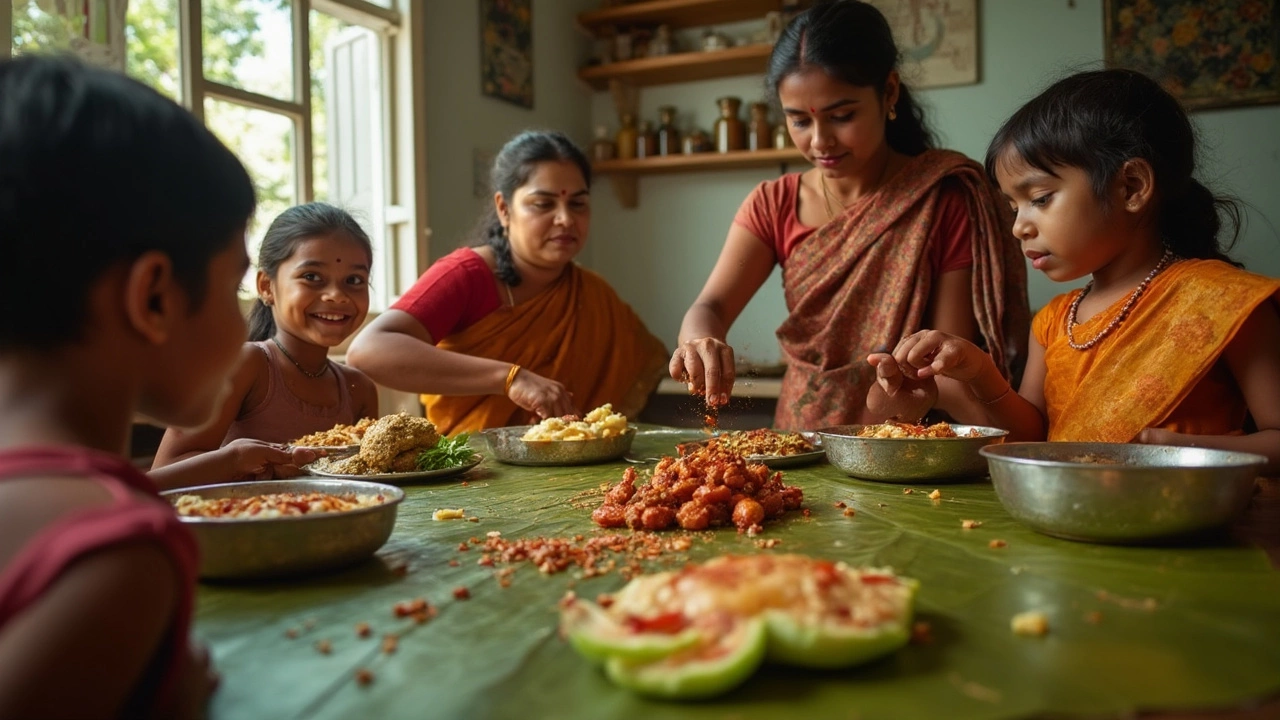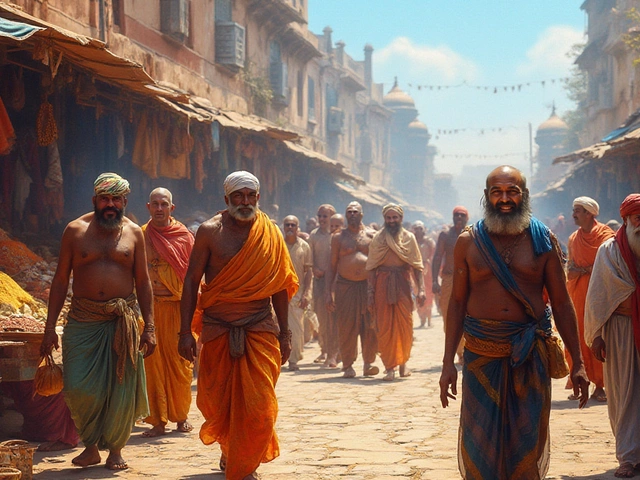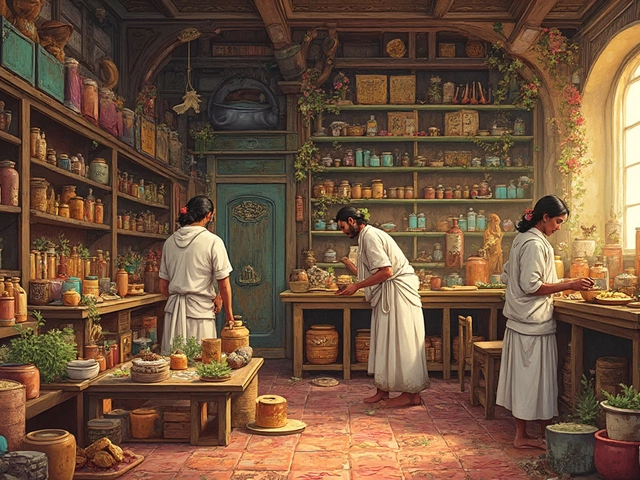Ever wonder which Indian state leaves you reaching for water the most? If you've tried Indian food and thought it was spicy, just wait till you hear how the south does it. Not every state piles on the chilies like you might think. There's real competition for who can handle—and cook—the spiciest stuff.
Some say it's all about showing hospitality, but trust me, in many parts of India, the spice game is personal pride. Exploring which state truly rules the spice charts isn't just foodie trivia. It's a crash course in how history, weather, and culture all end up on your plate. And if you're eyeing Tamil Nadu, buckle up—there’s more than just the famous Chettinad curry that brings the burn. Knowing which dishes to try (or skip) can save your mouth from a wild ride, especially if you're new to serious heat.
- Why Indian Food Packs a Punch
- Tamil Nadu and the Spice Race
- Contestants: Other Hot States
- How Locals Handle the Heat
Why Indian Food Packs a Punch
When people think about Indian food, 'spicy' is usually the first word that comes to mind, and with good reason. India is one of the largest producers and consumers of chilies in the world. The country’s obsession with heat isn’t just about taste—there’s real science and history behind it. Spiciness started as a way to keep food from spoiling in the days before refrigeration. Chilies and other strong spices like black pepper, mustard seeds, and cumin were natural preservatives. They helped fight off bacteria and kept food edible longer, especially in hot climates where spoilage is a big deal.
But how did the chili even get here? Here’s a surprise: chilies are not native to India. Portuguese traders brought them from South America about 400 years ago, and Indians took to them almost overnight. Before that, black pepper was the main source of heat. These days, you’ll find countless varieties of chili grown across India, each with its own firepower. Guntur chilies from Andhra Pradesh and Bhut Jolokia from Assam have become world famous—not just in local kitchens but also on global hot pepper lists.
Another reason Indian food pops with spice is tradition. Food is a big part of daily life and culture, and each region has its signature ways of using heat. For example, in Tamil cuisine, there’s a sharp focus on balancing flavors, but dishes can be loaded with red and green chilies, ground pepper, and fresh ginger. This isn’t just for thrill seekers—spices are believed to help with digestion, boost immunity, and even make hot days feel more bearable by causing you to sweat and cool off.
It’s not just about taste or bravado. For families in states like Tamil Nadu, Andhra Pradesh, or Rajasthan, spicy cooking is comfort food—the kind you miss when you move away. Next time you dig into a real South Indian meal, you’re not just experiencing a flavor; you’re tasting history and tradition, with a spiciest Indian food legacy that goes way back.
Tamil Nadu and the Spice Race
If you think Indian food is spicy, Tamil Nadu takes that up a notch and then some. This state has earned a solid rep for being one of the spiciest Indian food hubs, not just by chance, but because of how much its people really love a fiery kick in their meals. Tamil Nadu’s hot dishes aren't just about flavor—they’re a daily way of life here.
Chilies go into almost everything. Take Chettinad cuisine, for example. The infamous Chettinad chicken uses dried red chilies by the handful, black pepper, and a punchy mix of spices. Another crowd favorite, ‘Milagai Podi,’ literally means chili powder mix. Locals sprinkle it on rice or dip snacks straight into it, and it’s not for the faint of heart.
- Classic Tamil sambar uses spicy tamarind and at least two kinds of chilies.
- Kara Kuzhambu (a hot, tangy curry) uses fresh and dried chilies, plus chili powder.
- Even side dishes like chutneys often pack in green or red chilies for extra punch.
And it’s not just about taste buds—much of this tradition comes from the hot, humid climate. Spices, especially chili, help with sweating, which cools the body down. Plus, strong flavors mean food lasts longer, which matters in places with no fridge in sight. Here’s how Tamil Nadu’s spice levels compare to its neighbors:
| State | Main Chili Type | Average Heat Level (Scoville Units) | Popular Spicy Dish |
|---|---|---|---|
| Tamil Nadu | Guntur, Byadgi | 30,000 - 50,000 | Chettinad Chicken |
| Andhra Pradesh | Guntur | 40,000 - 60,000 | Andhra Chili Chicken |
| Kerala | Bird's Eye | 50,000 - 100,000 | Meen Curry |
| Karnataka | Byadgi | 15,000 - 30,000 | Bisi Bele Bath |
Even though Andhra Pradesh sometimes gets a shout for highest chili use (thanks, Guntur chili!), in everyday life, Tamil Nadu folks don’t hold back. If you're not used to it, start slow—ask for “less spicy” when eating out here until you know your limit. Taste-test the side condiments (like that red-hot podi), and you’ll quickly see that spicy isn’t just a flavor here—it's culture.

Contestants: Other Hot States
It's not just Tamil Nadu that's famous for fiery dishes. Several other Indian states have their own spicy legends. Andhra Pradesh is probably the most talked about rival when it comes to serious heat. Here, they toss in Guntur chilies into pretty much everything, from biryanis to pickles. Guntur, by the way, is one of the world's main chili markets. Try Andhra chicken curry, and you'll know it’s no joke.
Rajasthan joins the competition too, but for different reasons. Since water is scarce in this desert state, fresh ingredients are tough to find. So, the folks here amp up dry chutneys and curries with loads of red chilies and spices. Dishes like laal maas (a mutton curry totally drenched in chili) are legendary. If you like dried chili flavor more than fresh green ones, this is your paradise.
Let’s not leave out the north-east. Mizoram, Nagaland, and Manipur have a completely different set of chili traditions. Ghost pepper, or Bhut Jolokia, comes from this region and used to be the world’s hottest chili. Northeastern chutneys and pickles pack a wallop and have a dedicated chili crunch most people can’t handle.
- Spiciest Indian food isn’t just about burning your tongue; it’s about the freshest chilies and traditional ways of handling them.
- States like Andhra Pradesh, Rajasthan, and those in the north-east all use unique chili varieties and cooking styles.
Here’s a look at a few famous dishes and the chilies that make them hot:
| State | Signature Spicy Dish | Key Chili Used | Scoville Heat Units (SHU)* |
|---|---|---|---|
| Andhra Pradesh | Andhra Chicken Curry | Guntur Chili | 35,000 – 40,000 |
| Rajasthan | Laal Maas | Mathania Chili | 30,000 – 50,000 |
| Nagaland (Northeast) | Bhut Jolokia Chutney | Bhut Jolokia (Ghost Pepper) | 800,000 – 1,000,000 |
*Scoville Heat Units tell you how spicy a chili is. For reference, jalapeños are just 2,500–8,000 SHU.
If you’re an adventurous eater, keep an eye out for these dishes the next time you’re around an authentic Indian restaurant. And remember: most locals will tell you to start slow, because the heat from these states isn't something you want to underestimate.
How Locals Handle the Heat
Tamil Nadu locals don’t just power through spicy meals—they’ve got tricks up their sleeve. Generations have eaten hot food from the time they were toddlers, so their taste buds are pretty much trained for the spice slam. But it's not just about raw tolerance; there's some smart science and tradition at play here too.
The most obvious move? Pairing fiery dishes with cooling sides. Curd (yogurt) rice and buttermilk (called "neer mor") are classic companions. These work like a natural fire extinguisher for your mouth. Coconut chutneys and payasam (sweet puddings) also show up on the plate, keeping things chill so folks can keep enjoying those bold flavors. It’s not an accident—dairy soothes the spice by breaking up capsaicin, that burning chemical in chilies.
- Spiciest Indian food often comes with a side of science: regular eaters develop less sensitivity to capsaicin, so what would knock out a visitor is just an average meal in these homes.
- Meals are balanced—think hot rasam next to a mild sambar, or peppery kuzhambu with plain rice and papad.
- Kids are gradually introduced to the heat, starting mild and stepping things up as they grow.
- It’s not rare to see a banana or boiled egg served with a spicy main to blunt the burn.
Check out this straight-up comparison of how people handle spice in Tamil Nadu versus other states:
| Region | Common Cooling Side | Average Chili Used per Serving (grams) |
|---|---|---|
| Tamil Nadu | Curd rice, coconut chutney | 5-8 |
| Andhra Pradesh | Ghee, yogurt | 7-10 |
| Rajasthan | Buttermilk | 4-6 |
| Punjab | Lassi | 2-4 |
Want a tip? If you ever end up trying local food in Tamil Nadu and it feels like a mouth volcano, skip the water. Go for yogurt, a spoonful of ghee, or a bite of raw cucumber. Those tried-and-tested fixes work way better than chugging water. The idea isn’t just powering through the heat—it’s knowing how to keep your cool so you can actually enjoy the meal.





